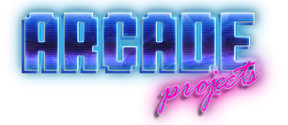Hi neku, are you still planning a compact version that could work with daisy chained ROMS?
Short anwser: Yes, the smaller one is still a thing.
Long anwser:
There is a tradeoff between stealth and plug&play that need to be done.
The new PCBs presented yesterday are born because of trade offs and constraints :
I want the kit to be plug&play (from the start of this project) but couldn't figure out an elegant way to connect things together.
I tried many ways to create a socket for each eeproms, but never was satisfied by either assembly complexity, manufacturing cost or plug&play'ability.
Also i am thinking that if i provide a plug&play kit i have to source the 8Mbits eeproms which comes with its own problems
like finding a reliable source, testing each eeproms because it's refurbished, i am not sure it will last, cost and so on.
And i don't feel like shrugging it off and saying "not my business", so i decided replacing the eeproms with largely available flash memories.
Thus i tried to create eeprom sized pcb flash memories, which i succeeded to create but then came the issue of connecting everything together and manufacturing cost.
If anyone is interested i will release the design of those but it will not be plug&play, a wire will have to be soldered between each "eeprom" to connect it together the same way lifted pins require.
By the way the new PCBs are not so big, the sound board is the exact size of the surface area of all the sound roms sockets, hiding nothing but the sockets.
The control board hides a bit of the underlying PCB but I find it reasonable (that's my own feeling about it and can understand someone else doesn't like it).
Regarding the "simple" IDE adapter, i will take picture of how i managed to mount the prototype for the demo released last week.
Basically to avoid lifting the pin on the eeproms a stacked two socket and cut the pin 1 out of the bottom socket then soldered the wire on the eeprom pin.
Routing the wires underneath the motherboard you can barely see it.
I would appreciate some through -holes to add support. IF the KI board has holes that we can line up. for proper stand-offs that'd be good, but even not just being able to add a support peg on a empty spot on the main board to help keep the sub boards from flexing that'd be good too.
That's already planed, support hole will be added, like you said, to avoid the pcb the bent where it's floating.
I would appreciate the option to run a DOM instead of a CF card. they're more expensive but they're faster and more reliable and I'm running DOM instead of CF on every HDD game I own when possible.
I will add a 44 pins connector in addition to the CF connector. So it's up to you to choose which one you want to use.
I really appreciate your method of switching games. it's much nicer than most in-game switches I've seen. If possible I'd love to maybe have a 3-way switch on the board that set:
[ KI1 only | KI2 only | In-Game Switch ]
We can repurpose bit 8 on the already existing dipswitch to enable/disable the in-game switching.
To select the game you will have to set it to the desired one before disabling it.
How does this sounds for you ?
I know it's just a render but for PCBs I usually like the multi to match the color of the main board, or be black (since black goes with everything). I tend to find other colored PCBs paired with a green mobo to look tacky.
So far i am planning to produce the PCBs in black (even the small flat cable connecting to two boards) unless there is a strong demand for an other color.

